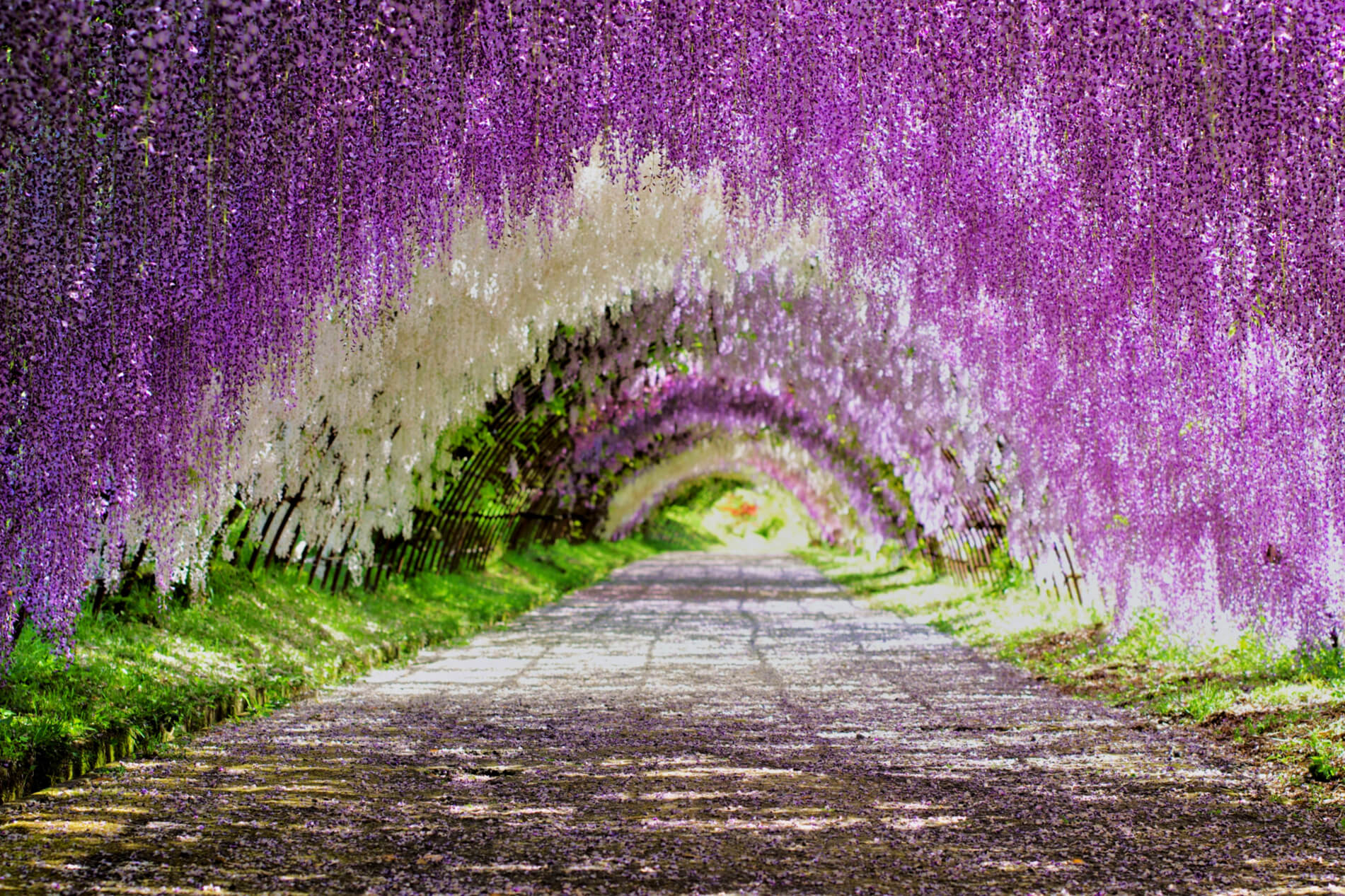

The Ashikaga Flower Park website has information about the flowers currently in bloom-including what they look like now. If you’d like to visit the wisteria tree yourself, the best time of year to do so is in the middle of April to the middle of May. In spring the leaves are yellow-green, edged in red, turning bright-green as they develop. With its ethereal presence and fairytale feel, it’s no wonder that the tree has been a muse for landscape photographers around the world. This beautiful small tree is a joy all year. Because of its age and the number of blooms, the tree branches are supported by gridded beams and form a stunning flower umbrella. Human intervention helps to give Ashikaga’s wisteria tree its stunning appearance. The vertical flowers dangle so far down that they nearly touch the ground and create a purplish-pink cloud that hovers above the grass.
#JAPANESE PURPLE TREE FULL#
Bonsai is an art of growing miniature trees that evolved in Japan, although also has roots in China where it is known as Penjing.Venture to the Ashikaga Flower Park in Tochigi, Japan and you’ll find a wisteria tree that’s often referred to as “the most beautiful in the world.” At around 150 years old, the massive tree is stunning when in full bloom. Their ornamental value isn't limited to gardens, with Acer palmatum making a popular choice for bonsai enthusiasts throughout the world. The first Acer palmatum reached England in 1820 and today they are extremely popular in ornamental gardens throughout the UK. This festival is known as momijigan, which means "leaf peeping".

The way the foliage of Japanese Maples change throughout the seasons is considered to be very beautiful in Japan, and people will gather round these trees to look at them collectively. In Japanese culture, Japanese Maple trees are said to signify great blessings, and any place in which they are planted is recognised as a peaceful retreat. Japanese Maple trees have been cultivated in Japan for centuries, using varieties found in Japan, Korea and China and it is now thought that over a 1000 cultivators have been produced. The Latin name, Acer palmatum, comes from the word palmatum (palm), referring to the hand-like shape of the leaves as noticed by Swedish doctor and botanist Carl Peter Thunberg in the 18th century. They are native to Japan, North and South Korea, China, Eastern Mongolia, and Southeast Russia. History of Acer palmatumĪcer palmatum are from the Sapindaceae family. Any pruning should be carried out in the dormant season as Japanese Maples bleed during other times of the year. Japanese Maples have an attractive domed or spreading natural shape and so require very little pruning. For the best foliage colour, plant Japanese Maples using ericaceous compost and water them using rain water instead of tap water when possible. Growing Japanese Maple TreesĪlthough tolerant of all soils, a well-drained soil and sheltered position is preferred by Japanese Maple trees as their pretty foliage is very sensitive to sun and wind. Amongst the smallest varieties are Acer palmatum 'Red Pygmy', Acer palmatum dissectum 'Garnet' and Acer palmatum Dissectum Viridis. Purple Ghost is a relatively robust Maple for its size.

Growing Purple Ghost Japanese Maple Trees. The most spectacular feature of the Purple Ghost has to be. We also stock a great choice of Dwarf Japanese Maple trees which will fit in practically any space. Purple Ghost Japanese Maple Appearance and Colors of Purple Ghost Japanese Maple Trees. Many are slow growing, making them popular in smaller gardens or planted in large containers as a feature. On the other hand, variegated Japanese Maples need partial shade to prevent the afternoon sun from scorching the foliage. The amount of sunlight needed varies between cultivators, with red and purple leaved Japanese Maples coping with the most sunlight and even requiring some to fully develop their dark hues.

Some varieties have particularly dramatic seasonal transformations, with Acer palmatum 'Osakazuki' being a favourite for morphing from green in spring and summer to bright scarlet in autumn. Japanese Maples are deciduous small trees renowned for their varied and changing colourful foliage.


 0 kommentar(er)
0 kommentar(er)
